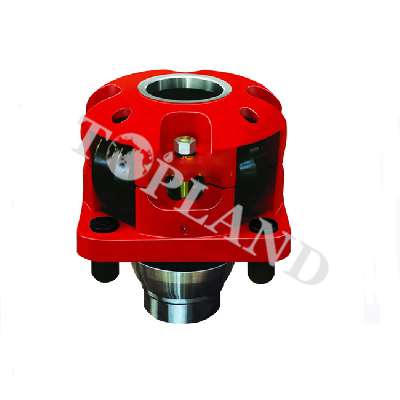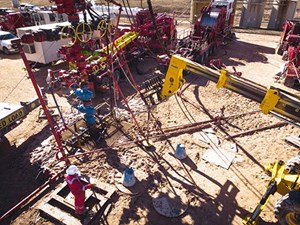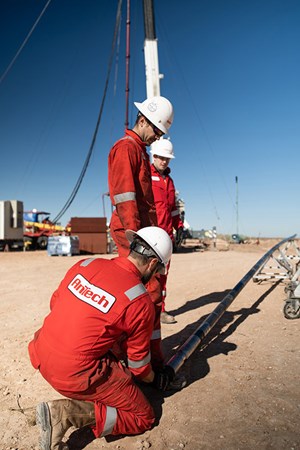COILED TUBING TECHNOLOGY: HOW TO PLAN A COILED TUBING DRILLING CAMPAIGN
Directional coiled tubing drilling is an established technique for revitalizing mature oil and gas fields. The technique has been used successfully in fields across the U.S., including Alaska, Texas, California, Kansas and Michigan, amongst others, Fig. 1. In particular, there has been high growth in deployment across the Middle East, with a doubling of the CTD rig count over the last few years and further growth expected in the coming years.
WHY USE CTD
The reasons for using CTD vary, depending on the application. The main reasons are thru-tubing or slimhole sidetracks; underbalanced drilling; high-pressure wells, which require specialist MPD/UBD; and remote operations.
The most commonly used BHA diameter for CTD is 3⅛ in., with larger tools available with 5-in. OD and smaller tools available with 2⅜-in. OD, Fig. 2. The BHA sizes are limited to 5 in. or below, due to the practical limits on the size of coiled tubing. The technique is most suited to smaller hole sizes, such as 8½ in. or below, with most wells drilled with a hole size less than 4¼ in. Therefore, the benefits usually stem from re-entry drilling of shallow gas or oil wells. An alternative way to think about CTD is that it is a reservoir drilling technology, so the closer to the reservoir, the more advantageous CTD will be.
Coiled tubing is designed for underbalanced operations and continuous circulation, as is standard. Therefore, mature fields with low pressure can be drilled, underbalanced, safely and efficiently, with the reservoir rock protected from damage—critical when there is little pressure to drive production. Although underbalance can be achieved with a single-phase fluid in high-pressure reservoirs, this is particularly relevant to fields requiring a two-phase drilling fluid, such as water and nitrogen, as a stable circulating regime can be maintained at all times. Also, some fields are not able to use EM telemetry, and, therefore, wired CTD tools are the only option in two-phase systems.
Coiled tubing also has significant advantages for drilling high-pressure wells, either using managed pressure or underbalanced drilling techniques. This is due to continuous circulation and high-pressure control equipment, as is standard. The continuous circulation allows for better control of downhole pressure through adjustable pumping rates, in addition to drilling fluid weight and choke pressure. Pressure control equipment of up to 15,000 psi is also relatively standard.
Coiled tubing drilling is also advantageous in offshore projects, in terms of slot recovery type, equipment footprint and cost reduction. CTD operations can be carried out through tubing, which removes a significant amount of the slot recovery operations. Due to the size of the equipment, CTD can fit on most platforms and does not require the use of a jackup rig, thereby reducing the cost of new wellbores and minimizing the crew numbers required to do the work. This is in addition to the advantages of MPD on coiled tubing.
The smaller, more mobile coiled tubing equipment gives an advantage over conventional rigs in remote locations: for example, northwestern Australia. This can be critical to the commercial success of small projects. However, a combined approach with a conventional rig can, instead, be the optimum solution. For example, utilizing a conventional drilling rig to drill the well down to the reservoir and then using the CTD package to drill the reservoir, ideally underbalanced, optimizes the benefit of each technology. In addition, it also means more wells can be drilled in a set period of time than with a single rig, or for lower cost than mobilizing two drilling rigs. This is before the improvements to production are factored in from drilling underbalanced.
However, there are situations where CTD is not suitable. The largest hole size ever drilled directionally with CTD is 8½ in., and currently the technology is unable to drill larger diameters. CTD has been used successfully to drill new wells from surface; however, this requires specialist, hybrid coiled tubing units, which can be difficult to source. When a hybrid unit is available, they are usually depth-limited and, therefore, only suited to shallow wells. Consequently, operations requiring large hole sizes and casing running operations are unlikely to be suitable for CTD.
Another limitation of CTD packages is in cementing. Due to the wireline inside the coil required to operate the BHA, any cementing operations become very time-consuming, due to the resultant slack management, or expensive, due to having a second standard coiled tubing string available for that operation.
EQUIPMENT REQUIREMENTS
A coiled tubing drilling package requires the same fundamental equipment as a conventional drilling package—a “rig,” a fluids and solids control package and a set of downhole drilling tools. All coiled tubing units can be used for CTD re-entry operations within the limits of their capacity. However, CTD requires coiled tubing with wireline inside, commonly referred to as e-coil. Consequently, a collector bulkhead and a slip-ring collector need to be installed, to allow an electrical connection from outside the reel to the wireline inside the coil and to the BHA.
The fluids and solids control equipment utilized will be heavily dependent on whether or not the well is going to be drilled underbalanced and whether single- or two-phase fluid systems are going to be used. Something that often surprises people unfamiliar with CTD operations is how fine the cuttings are. This can cause challenges with solids control—especially when drilling underbalanced—and must be taken into consideration when planning a CTD campaign.
COMPLETION EQUIPMENT
Ideally, the formations drilled with coiled tubing can be left with a barefoot completion. Completion options are relatively limited when using a coiled tubing unit alone, unless using a hybrid unit. On land, it is usually simpler and more cost-effective to bring in a workover unit to run pipe. The challenge with underbalanced operations is to ensure that any completion run is installed, while maintaining the underbalanced condition at all times.
“Controlling downhole-pressure fluctuations while drilling underbalanced reduces formation damage, avoids lost circulation, and minimizes differential sticking.”




 Upload RFQ
Upload RFQ







 Twitter
Twitter Linkedin
Linkedin Facebook
Facebook YouTube
YouTube Sales@toplandoil.com
Sales@toplandoil.com +86 21-50890868
+86 21-50890868 Head Office: 8-1011,Lane 5600, Chuansha Road, Pudong, Shanghai, China
Head Office: 8-1011,Lane 5600, Chuansha Road, Pudong, Shanghai, China 